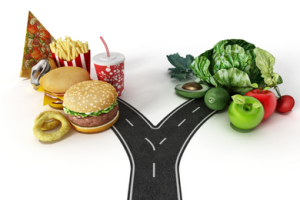The first Sustainable Development Goal (SDG) is very straightforward: “End poverty in all its forms everywhere” and the connection between poverty and health runs deep and strong. Keep reading if you are curious about some of the more, and less, obvious connections.
Poverty is a multidimensional issue that covers more than just money, but the connection between money and health is the most obvious, especially when thinking about the possibility of paying for healthcare or engaging in prevention strategies. To begin with, healthcare is expensive and if people cannot afford it, their health will suffer. However, this relationship applies also in contexts where healthcare is relatively cheap (i.e. public or state-subsidized): if I do not have money to pay for transportation to the doctor’s offic

e, if I cannot take unpaid leave from work or work fewer hours, or cannot afford to pay for childcare, I will not be able to go to the doctor or the hospital, even if it is a free visit.
When looking at prevention, a noteworthy and staggering fact is that obtaining the necessary energy from a healthy diet can cost more than three times as much as obtaining the same amount of energy from an unhealthy diet (think about the cost of a fast-food sandwich and the cost of a meal with fresh vegetables and wholegrain carbs). Many studies demonstrated that a balanced diet is necessary for good health and that not only malnourished people but also people on unbalanced diets are much more likely to fall ill.
Money is also required for resiliency with respect to unexpected events. A clear example is how people deal with (the increasing number of) climate-related extreme events. If I have money, I can afford to prepare for them (i.e. purchase a generator, install stronger windows or roofing, store water, and food), move out of harm’s way when they happen (i.e. pay for a hotel, rental), and more rapidly return to normalcy after the event (i.e. repairing my house as soon as the event is over, driving to work if public transit is not available).
Unfortunately, poverty’s effect on health is not only indirect, or merely mediated by money. In fact, being poor, by itself, is very stressful, and stress is an important driver of many illnesses,

starting with cardiovascular diseases. Moreover, everyone dislikes being stressed, but affordable respite from stress is often associated with unhealthy behaviors such as smoking, sedentary activities (i.e. TV watching), and over-eating, especially highly processed foods.
There are other dimensions of poverty that affect health. For example, poor housing is a dimension of poverty that directly affects health: living in a damp and cold house in cold-climate countries or in a house without mosquito nets in a tropical country can significantly impact your health in a negative way. Similarly, access to basic services is a dimension of poverty that directly influence the health of people: access to safe drinking water, electricity to operate a fridge (to store fresh vegetables but also some life-saving medicines), living in areas without air and soil pollution, living in proximity of a hospital, fire stations, or supermarkets.
Before concluding, I want to briefly bring your attention to the opposite direction of influence: poor health can increase poverty. In the United States is not uncommon for people to have to declare bankruptcy after incurring really high healthcare costs. In countries with poor social safety nets, illness usually means loss of income for the sick person and sometimes, also for the family member(s) that needs to take care of them.
Given the great role that poverty plays in limiting people’s ability to lead a healthy and happy life, it is no surprise that the United Nations, meaning the representatives from all the nations on Earth, decided that solving the poverty issue was the first goal that humanity needs to achieve.
Next week, we will talk about the relationship between SDG2 – Zero Hunger and health. Stay tuned!
(this is the second entry of our SDGs and One Health series, you can find our previous post here)
By: Dr. Luca Mantegazza | Research Program Coordinator
 0
0
